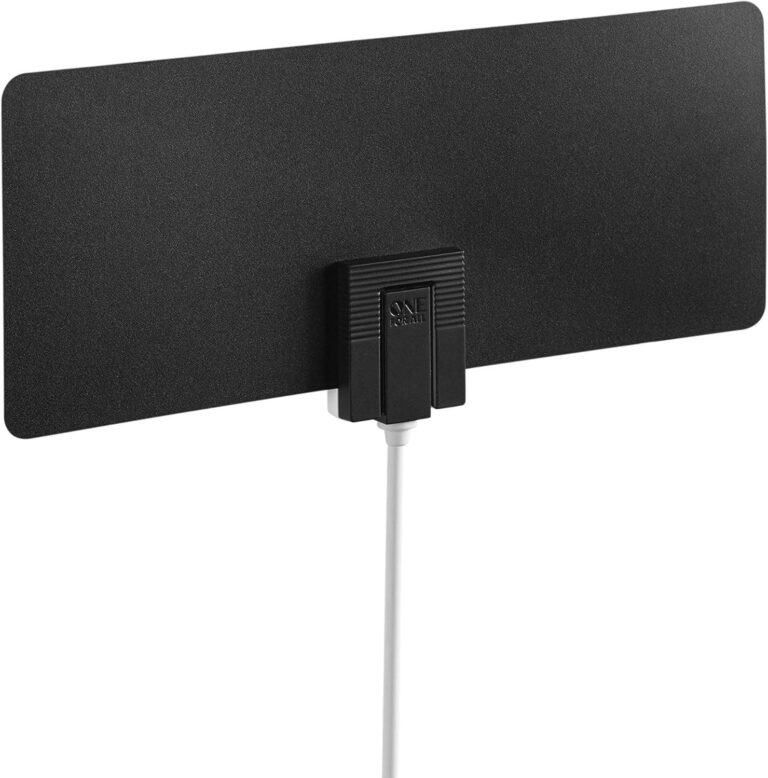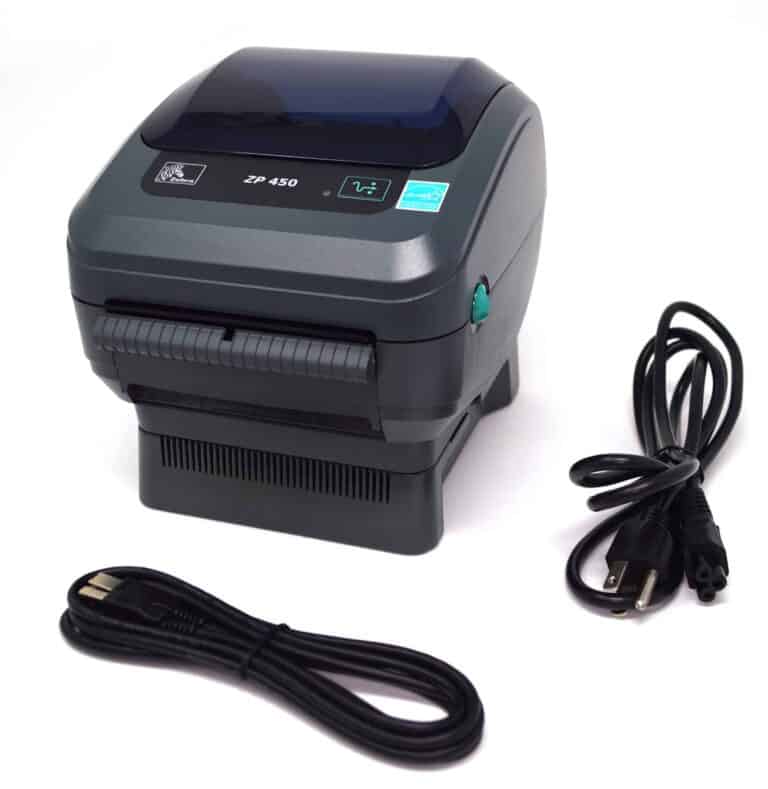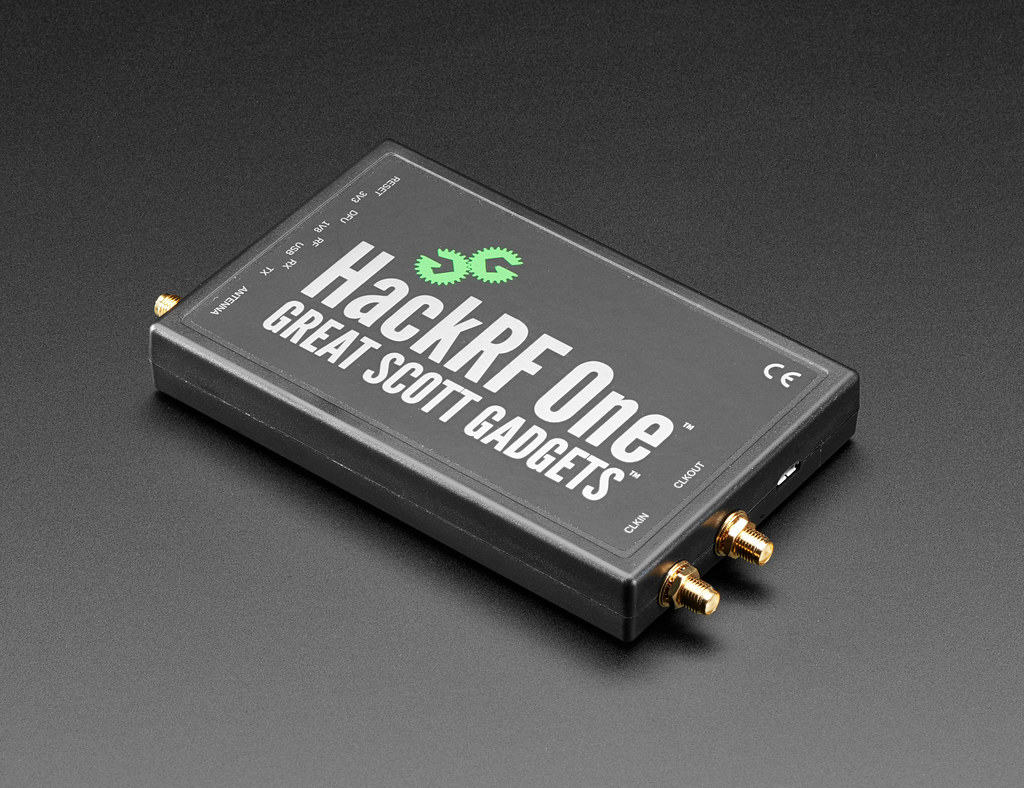
The HackRF is a versatile tool in the field of radio technology, showing off a broad frequency range and an open-source framework.

What Is HackRF?
HackRF is a Software Defined Radio (SDR) peripheral that allows the transmission and reception of radio signals across a wide frequency range. It stands out in the electronics community for its ability to handle various radio frequencies and its accessible design. HackRF serves as a bridge between software and radio waves, enabling enthusiasts and professionals to explore wireless communications.
What You Can Do with a HackRF
Analyzing Wireless Protocols
You can observe how different devices communicate. HackRF picks up a huge range of frequencies. Devices like remote controls, garage door openers, and even wireless keyboards use radio frequencies to communicate. HackRF can help you understand and even replicate these signals.
Testing Wireless Devices
Got a custom wireless project? HackRF is fantastic for testing the range and strength of your own wireless devices. You can even use it to purposefully jam signals and see how your device reacts in a less-than-ideal environment.
Security Research
Many “secure” wireless systems turn out to have flaws. HackRF is a valuable tool for security professionals and researchers looking to find potential exploits in wireless devices.
Key Specifications of the HackRF One
Here’s a quick look at what makes this little device so powerful:
| Specification | Value |
|---|---|
| Frequency range | 1 MHz to 6 GHz |
| Maximum sample rate | 20 million samples per second |
| Interface | USB |
| Compatibility | GNU Radio, SDR#, and more |
Remember: Using a HackRF to intercept communications may be illegal in your area. Always research your local laws and get proper consent before experimenting.
Overview of HackRF
Capabilities:
- Frequency range: 1 MHz to 6 GHz, covering a vast spectrum from AM radio to Wi-Fi and beyond.
- Modes: Transmit, receive, and half-duplex (transmit and receive alternately).
- Open-source: Hardware and software are open-source, allowing for customization and development by the community.
- Popular software: Works with SDR software like GNU Radio, SDR#, and HackRF tools, unlocking various functionalities.
Key features:
- Compact and portable: Fits easily in your hand, making it ideal for field work and experimentation.
- Powerful: Transmits up to 15 dBm of power, enabling effective signal transmission.
- Versatile: Used for various applications like:
- RF research and analysis: Studying radio protocols, testing equipment, and exploring wireless communication.
- Security testing: Identifying vulnerabilities in wireless systems and exploring attack vectors.
- Amateur radio: Experimenting with different radio frequencies and protocols.
- Education and learning: Understanding radio technology and the principles of SDR.
HackRF is a powerful and versatile tool for anyone interested in exploring the world of radio. Its open-source nature and wide range of applications make it a popular choice for hobbyists, professionals, and researchers alike.
HackRF One Characteristics
The HackRF One is the current hardware iteration for the HackRF platform. It exhibits the following specifications:
- Frequency Range: 1 MHz to 6 GHz
- Transceiver: Half-duplex
- Sample Rates: 2 Msps to 20 Msps (megapulses per second, quadrature)
As an open source hardware platform, HackRF One is designed for versatility in testing and development. It can connect via USB or operate standalone, offering flexibility for users’ projects. The HackRF One is not only a tool but also part of a larger hardware ecosystem, supporting advancements in the exploration and creation of wireless technology.
Technical Specifications
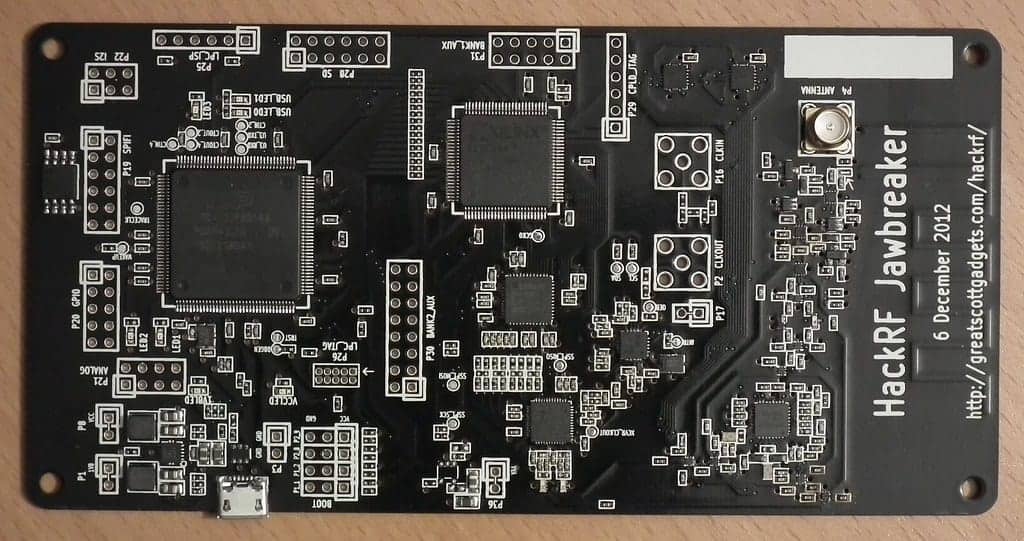
The HackRF is a versatile tool in the world of software-defined radio (SDR), boasting a broad frequency range and equipped with essential hardware components tailored for various RF applications.
Frequency Capabilities
One of the HackRF’s notable features is its extensive frequency range. It operates between 1 MHz and 6 GHz, making it suitable for a vast array of radio frequency investigations. This range allows users to work with frequencies from the lower end of the spectrum, such as long-wave, all the way up to microwave frequencies in the GHz domain.
Hardware Components
The HackRF includes several key hardware components. Notably, the device supports a range of sample rates from 2 Msps to 20 Msps (million samples per second), which is essential for defining the quality and resolution of the received signal. Each sample is 8 bits in resolution, striking a balance between data throughput and detail. For connectivity, it uses a High Speed USB with a USB Micro-B connector, ensuring fast data transfer to and from the connected computer. Power is typically drawn from the USB bus, making the device highly portable and easy to use in various settings. In terms of physical connections, it features an SMA female antenna connector and SMA female clock input and output, crucial for connecting antennas and synchronizing with other equipment. The device’s design is openly available, inviting customization and enhancements from the hardware design community.
Connecting and Configuring HackRF
Before using the HackRF, one should become familiar with how to establish a proper connection to a computer and understand the appropriate ways to connect an antenna. This ensures the device functions correctly for various applications, from firmware updates to radio experimentation.
USB Interface
The HackRF One connects to a computer via a high-speed USB interface, which it uses for communication and power. Ensuring that the HackRF’s USB peripheral is functioning properly is crucial for software like gnuradio-companion or gqrx to detect and utilize the device. To start off:
- Connect the HackRF One to an available USB port on the computer.
- A computer may automatically recognize the device; if not, manual driver installation may be necessary.
- Confirm that the device is recognized by the system or the intended software.
It’s important for users to know that while the desktop environment can enhance the experience with graphical applications, it is not necessary for basic operations such as firmware updates.
Antenna Connections
For HackRF One, the antenna connects to an SMA female antenna connector. Attention to the type of antenna connector is essential, as mismatched connectors can lead to non-functional setups. Here’s what to watch for:
- Ensure you are using SMA connectors, not RP-SMA connectors, as they are incompatible despite their similar appearance.
- A secure connection is indicated by a snug fit. However, double-check that the antenna has the correct male or female end needed to create a successful link.
By carefully following these steps and confirming the correct connections, one sets up their HackRF for optimal performance and lays the groundwork for exploring the wide range of capabilities that software-defined radio has to offer.
Software Support
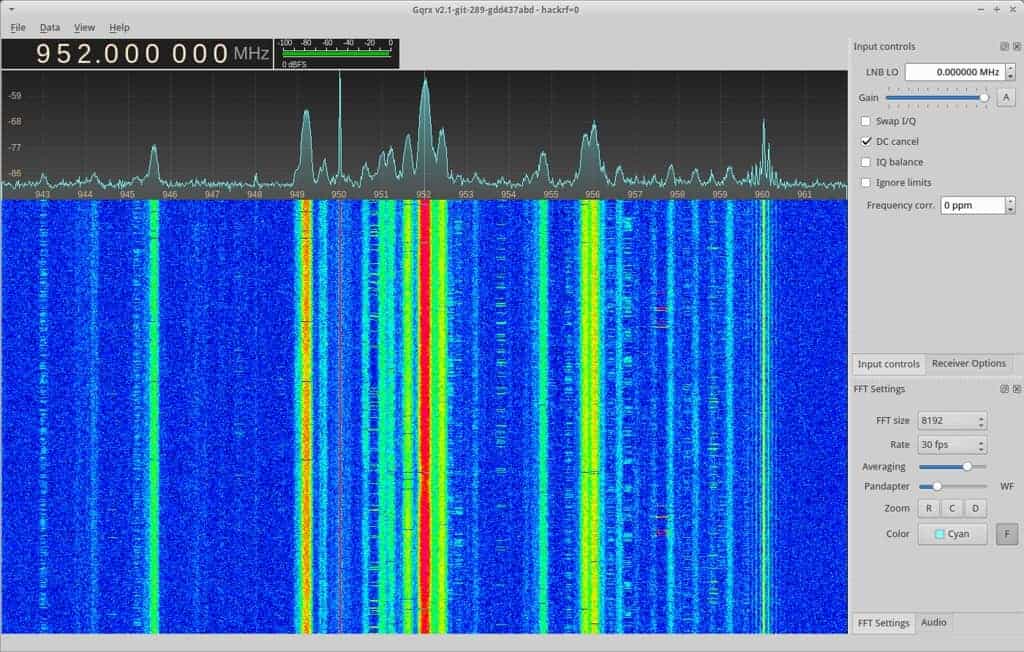
HackRF, a versatile software-defined radio device, interacts with a computer through a collection of software tools. Knowing about compatible software and how to keep the system updated ensures optimal performance and access to the latest features.
Compatible Software Packages
There are various software packages that work seamlessly with HackRF providing a wide range of functionalities:
- GQRX: A software defined radio receiver powered by GNU Radio and Qt, used for listening to a variety of radio signals.
- GNU Radio: An open-source toolkit that provides signal processing blocks to implement software radios.
- SDR# (SDRSharp): A popular Windows software for Software Defined Radio that supports HackRF.
For those interested in aviation data, the GNU Radio Mode-S/ADS-B software is specifically tailored to interact with HackRF to receive and interpret Mode-S and ADS-B signals from aircraft.
Another tool to consider is the QSpectrumAnalyzer, which makes spectrum analyzing with HackRF easy and accessible.
Firmware and Software Updates
Keeping HackRF’s performance optimal involves routine updates to both software and firmware:
- HackRF Tools and libhackrf: These are command-line utilities and a low-level library, respectively, that allow you to control the HackRF device.
To update the software on a host computer:
- Upgrade libhackrf and HackRF Tools.
For the firmware on HackRF:
- Update the firmware using the
hackrf_spiflashprogram.
New releases often include enhancements for the hardware design and software support for HackRF One. It is crucial to stay updated with the latest releases to ensure improvements and fixes are applied, contributing to a stable and more powerful user experience.
Development and Testing Tools
When it comes to enhancing the capabilities of the HackRF, developers have access to a variety of tools that support both innovation and functional verification.
Expansion Options
Expanding the functionality of HackRF devices is accessible through various means:
- Hardware Add-ons: Users can leverage add-on boards and modules to augment the HackRF’s capabilities, such as GPS, additional filters, or amplifiers.
- Third-party Tools: The open design permits integration with tools from other developers to extend the HackRF’s operational scope.
Development Resources
HackRF is outfitted with resources designed to support development:
- Source Code: Freely available and modifiable, the source code serves as a springboard for custom development.
- Documentation: Comprehensive guides facilitate understanding and manipulation of the hardware and software’s intricacies.
- Community Support: An active community contributes to a collective knowledge base, assisting developers in problem-solving and sharing use cases.
Operating Modes
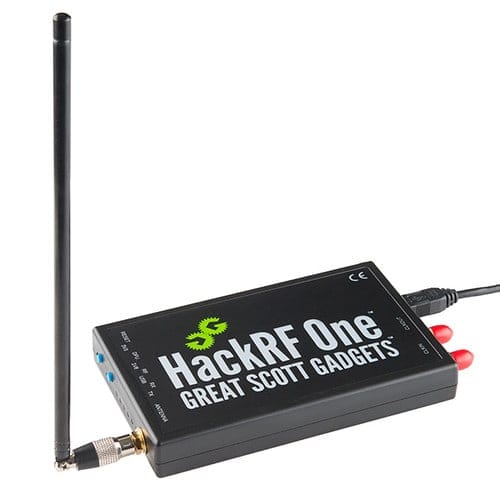
The HackRF is a versatile tool with different operating modes, each suited for specific tasks involving signal processing. Users can switch between these modes depending on what they need to accomplish, whether it’s receiving, transmitting signals, or operating independently of a computer.
Receiving and Transmitting Signals
HackRF operates primarily as a half-duplex transceiver, meaning it can either send (transmit) or receive signals at any given time, but not both simultaneously. In the context of reception, HackRF can intercept a wide range of frequencies—from 30 MHz to 6 GHz—which enables it to handle various types of radio communications. For transmission, HackRF allows users to broadcast signals within the same frequency range. This capability is crucial for testing and development of radio technology among hobbyists, researchers, and professionals.
Stand-Alone Operation
In addition to being used with a computer, HackRF can function in stand-alone mode. This flexibility is especially important for tasks that might need to be run without direct computer control or in environments where a computer might not be practical. Users configure the device ahead of time and let it operate on its own, performing pre-set tasks such as signal replay or testing without the need for continuous input. Stand-alone operation emphasizes the HackRF’s adaptability, tailoring it for a variety of scenarios outside of the traditional transceiver role.
Performance Enhancement
Enhancing the performance of the HackRF involves fine-tuning its signal processing capabilities and augmenting it with supportive equipment to improve its overall functionality.
Optimizing Signal Quality
To optimize the HackRF’s signal quality, Digital Signal Processing (DSP) techniques play a crucial role. These techniques improve the clarity and integrity of the signal being transmitted or received. One aspect that can be improved through DSP is the baseband filter, which is vital for rejecting unwanted frequencies and reducing noise. Regularly testing the HackRF’s performance across different frequencies and under various conditions is essential to ensure optimal signal quality.
Additional Equipment Support
The HackRF supports a variety of additional equipment to boost its performance further:
- Antennas: Selecting the right antenna for specific frequencies can significantly enhance signal reception and transmission.
- Amplifiers: Using external amplifiers can increase the antenna port power, which is beneficial when working with weak signals.
- Filters: External filters are useful for narrowing the bandwidth or eliminating interference, which sharpens the focus on the desired signal.
Pairing the HackRF with the right combination of supportive equipment can markedly lift its performance, especially in specialized applications. It’s important to match these enhancements with the purpose of the HackRF’s use, whether for communication, exploration, or experimentation.
Community and Support
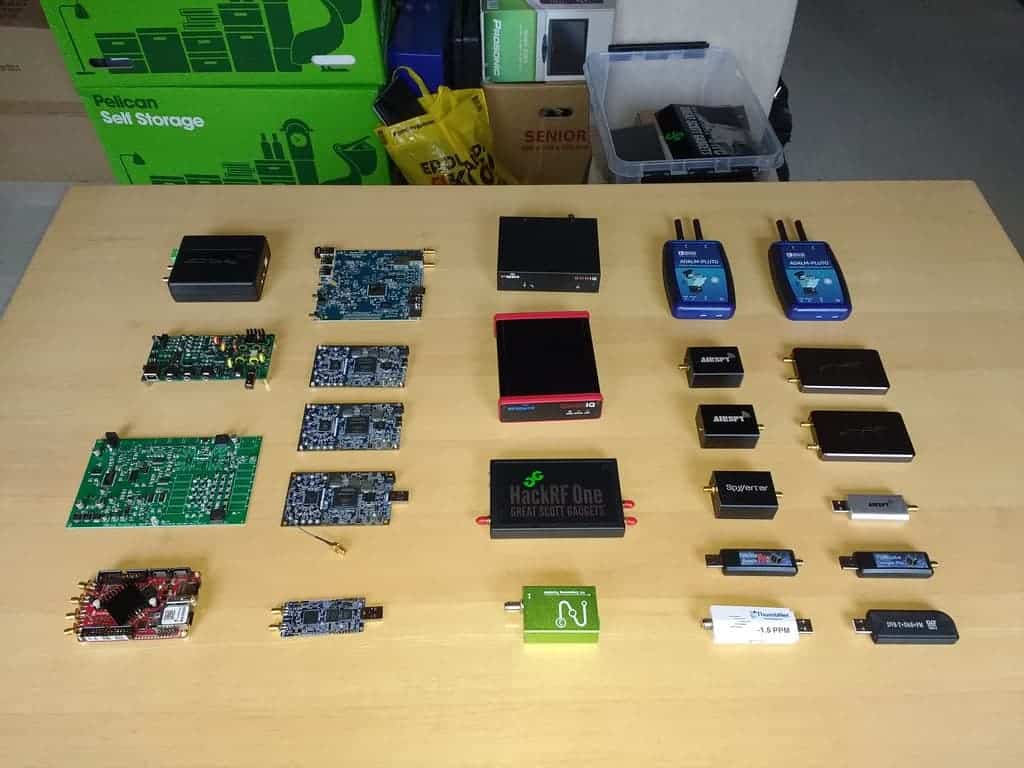
The HackRF platform, created by Great Scott Gadgets, thrives on a robust community and accessible support resources that help users tackle various challenges.
Online Forums and Discussions
Great Scott Gadgets encourages HackRF users to partake in community discussions, particularly on platforms like Discord. These forums are ideal for exchanging insights, seeking advice, and sharing experiences with like-minded enthusiasts. It’s important to remember that while immediate responses are not guaranteed, the community thrives on the participation of its members, making it a valuable resource.
Technical Support and Documentation
For technical support, HackRF’s GitHub project serves as a central hub where users can report bugs or issues, ensuring they don’t go unnoticed. Additionally, comprehensive documentation is available on Read the Docs, providing users with detailed guidance and instructions for HackRF devices. It’s a testament to the commitment put forth by Great Scott Gadgets to foster an environment where help and information are readily available to anyone looking to explore the capabilities of HackRF.
Applications of HackRF
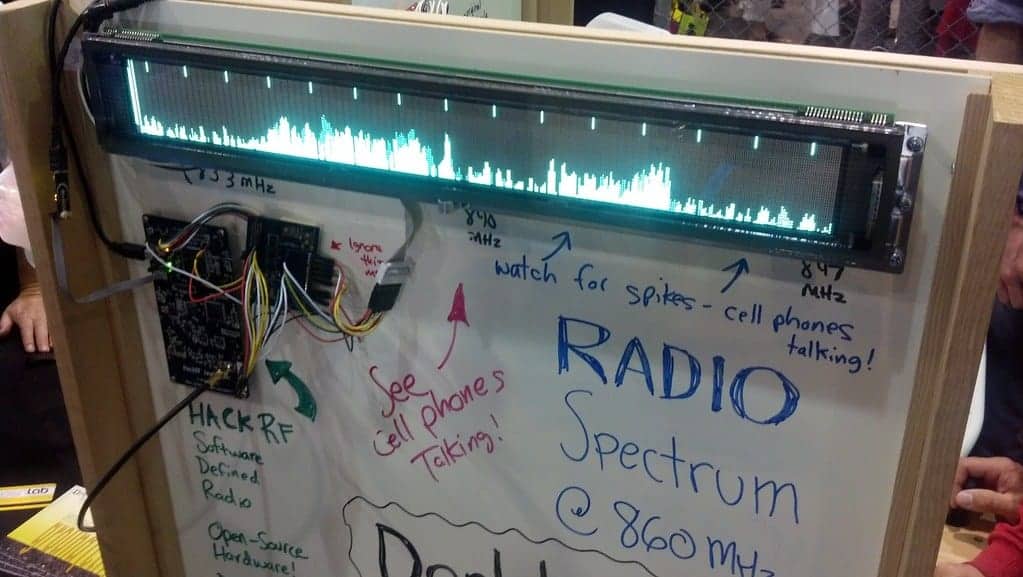
The HackRF is a versatile piece of equipment that finds its place in various practical scenarios. It’s particularly known for its value in security applications and in the broad sector of research and development.
Security and Surveillance
Security professionals often turn to the HackRF for testing and analysis purposes. This powerful tool allows for the monitoring of radio communications, which can be crucial in areas such as:
- Detecting vulnerabilities: Engineers can test security systems, like wireless alarm systems, by simulating attacks to identify potential weaknesses.
- Surveillance activities: In certain operations, listening in on radio frequencies can help security teams gather valuable information.
Research and Development
Researchers and developers depend on tools like the HackRF for its flexibility and capability to handle a wide range of frequencies. This is vital for:
- Prototyping new technologies: The HackRF serves as an experimentation tool, allowing engineers to test and debug RF systems rapidly.
- Educational use: Universities and tech labs use the HackRF to teach modern radio technology concepts and to give students hands-on experience.
Getting Started with HackRF
When embarking on the HackRF journey, the key essentials involve setting up the right software, and learning how to troubleshoot common problems.
First Steps and Tutorials
First things first: Software Setup. For new HackRF users, starting with a compatible operating system like Pentoo Linux is advised. It’s tailored for penetration testing and comes packed with tools necessary for HackRF use. However, you can use HackRF with your favorite OS by installing some essential packages. Most Linux distributions include libhackrf and gr-osmosdr in their repositories:
- For Pentoo Linux:
Open a terminal and type:sudo pentoo-updater - For other Linux systems:
Use the package manager to install GNU Radio and other required software:sudo apt install gqrx-sdr hackrf libhackrf0 libhackrf-dev gr-osmosdr
After setting up the software, dive into the official documentation or look up video tutorials that guide you through basic operations like transmitting and receiving signals. Some websites have step-by-step instructions specifically for HackRF, helping you from the initial plugin stage to executing your first signal test.
Managing Common Issues
Even the most well-set systems can run into issues. If you come across a bug or an error message, don’t panic. Most problems have already been encountered and solved by the community. Here are some tips to manage these hiccups:
- Keep Everything Up-to-Date:
Regularly updating your system and software can prevent a lot of issues.
- Consult the FAQs and Forums:
The official HackRF GitHub repository and forums are excellent places for finding solutions to common problems.
- Testing Equipment:
Before concluding that there’s a bug, verify your setup. Check if all the equipment, including antennae and cables, is connected properly and functioning.
By taking these initial steps seriously and knowing where to look for solutions to common issues, you’ll be on the right path to mastering your HackRF device.
Frequently Asked Questions

When exploring the capabilities of the HackRF One, a common set of inquiries arise. These questions help users gain a clearer understanding of its functions, legal considerations, variations, costs, alternatives, and operational range.
What purposes does a HackRF One serve in RF applications?
The HackRF One serves as a versatile tool in radio frequency (RF) applications, primarily used for testing, monitoring, and developing radio technology. It functions as both a receiver and a transmitter across a broad spectrum, from 1 MHz to 6 GHz.
Can the HackRF One be utilized legally for all radio frequency projects?
While the HackRF One is legal to own and operate for experimental and educational purposes, there are regulatory constraints that govern transmitting on certain frequencies. Users must adhere to local laws regarding radio frequency usage to ensure legal operations.
How does the HackRF One differ from the PortaPack variant?
The HackRF One is a standalone SDR platform, while the PortaPack is an add-on module for the HackRF One that adds a portable interface. This interface allows users to operate the HackRF One without a computer, providing a more mobile solution.
What is the price range for purchasing a HackRF One?
The price of a HackRF One can vary depending on the seller and any included accessories, but generally, units range from $300 to $400.
What alternatives to HackRF are available for radio frequency hacking?
Alternatives to the HackRF One include other software-defined radios like the RTL-SDR for budget-conscious enthusiasts, the LimeSDR for those seeking a higher frequency range, or the USRP series for professional-grade applications.
Over what distance can the HackRF effectively transmit or receive signals?
The effective transmission and reception range of the HackRF One can widely vary based on the antenna used, the operating frequency, and the ambient conditions. Typically, the HackRF One can transmit up to several kilometers under optimal conditions and configurations.



